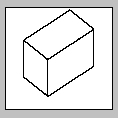| Lump sugar | [German version] |
Table of contents |
|
| General: | ||
| Product information | ||
| Packaging | ||
| Transport | ||
| Container transport | ||
| Cargo securing | ||
Product information
Product name
| German | Würfelzucker |
| English | Lump sugar |
| French | Sucre en morceaux |
| Spanish | Azúcar en terrones |
| Scientific | Sucrose (C12H22O11) |
| CN/HS number * | 1701 99 90 |
(* EU Combined Nomenclature/Harmonized System)
Product description
Lump sugar is refined sugar which has been pressed or cast into a particular shape. Chemically speaking, refined sugar is ultrapure sucrose which has been obtained from white sugar by dissolution and recrystallization. Its sucrose content is 99.9%. Refined sugar is pure white in color with sparkling crystals. Refined sugar has no secondary odors or flavors. The crystals are readily soluble.
Sugar cubes are available as either pressed or cast cubes.
| Pressed cubes: Sugar cubes were first made in 1840 by the Austrian Jacob Christoph Rad. Cubes were initially made by pressing moistened sugar and casting it in sheets, which were broken up first into strips and then into cubes. Today, fine-grain refined sugar with 2 – 3% of added water is still pressed into sheets and strips, which are dried and divided into cubes. The dividing surfaces of pressed cubes may vary between smooth and very uneven as the strips are not always uniform in structure. Since pressure bonds the sugar crystals together firmly only at the surface, pressed cubes are easily crushed and then break apart completely. |
|
| Cast cubes: Refined sugar massecuite is allowed to solidify in a sheet mold. The sheets of sugar are then centrifuged and washed once more with saturated refined sugar solution. Then they are dried and divided into cubes. Cast cubes are stronger, harder and somewhat more porous than pressed cubes. The sugar crystals are clearly recognizable. Due to their porous structure, cast cubes dissolve in liquids more easily than pressed cubes. Sugar cubes are often arranged in neat rows in their packaging. |
|
| Loaf sugar: Sugar loaves are also produced by the pressing process and used, for example, in traditional German burnt punch and in jam making. |
Quality / Duration of storage
The most important quality feature of lump sugar is its purity, as it is highly sensitive to contamination. Deficiencies caused by dirt or entailing a hazard to health result in serious claims (food safety legislation).
Moist, dirty and damaged packages must not be loaded.
Subject to compliance with the appropriate temperature and moisture/humidity conditions, the maximum duration of storage is not a limiting factor as regards transport.
Intended use
Lump sugar is primarily used for sweetening hot drinks.
Figures
(Click on the individual Figures to enlarge them.)
 Figure 1 |
 Figure 2 |
 Figure 3 |
 Figure 4 |
Countries of origin
This Table shows only a selection of the most important countries of origin and should not be thought of as exhaustive.
| Europe | EU countries, Poland, Czech Republic, Russia |
| Africa | South Africa |
| Asia | India, China, Philippines |
| America | Cuba, Brazil, USA, Mexico, Argentina |
| Australia | Australia |
Back to beginning
Packaging
Lump sugar is packaged in paperboard cartons.
The packaging size should be so selected that the dimensions of the individual area modules or area module multiples are conformed to the conventional pallet sizes (800×1200 mm and 1000×1200 mm) and cargo units may thus be produced.
| Marking of packages | ||
 Keep dry |
 Top |
|
Back to beginning
Transport
Symbols
 General cargo |
Means of transport
Ship, truck, railroad
Container transport
Standard containers, subject to compliance with limits for water content of goods, packaging and container flooring.
Cargo handling
It is also imperative that the product be protected from moisture (rain, snow) during cargo handling, as the packaging (paperboard cartons) is extremely sensitive to moisture and loses stability. Moisture may additionally degrade product quality (mold, fermentation).
The cartons are relatively sensitive to mechanical stresses. Incorrect handling, e.g. throwing the packages, may result in damage.
Stowage factor
| 2.00 m3/t (cartons) [1] |
Stowage space requirements
Cool, dry
Segregation
Marker pen, oil crayon, fiber rope/thin fiber nets (unimpregnated, otherwise there is a risk of odor tainting)
Cargo securing
Because of its impact- and pressure-sensitivity, packages of this cargo must be secured in such a way that they are prevented from damaging each other. Spaces between packages or pallets must be filled, to prevent slippage or tipping. By selecting the correct packaging size or cargo unit (area module or area module multiple), holds can be tightly loaded (without spaces).
Back to beginning
Risk factors and loss prevention
RF Temperature
Favorable temperature range: no lower limit – 30°C [1]
Caking phenomena are promoted by relatively high temperatures (> 30°C). Do not stow lump sugar near heat sources.
Temperature variations should, as far as possible, be avoided as the resultant release of water vapor may result in agglomeration (sticking together).
Back to beginning
RF Humidity/Moisture
Lump sugar requires particular humidity/moisture and possibly ventilation conditions (SC IV) (storage climate conditions).
| Designation | Humidity/water content | Source |
| Relative humidity | 55 – 65% | [1] |
| Water content | 0.03 – 0.2% | [1] |
| Maximum equilibrium moisture content | 65% | [1] |
Relative humidities > 70% result in agglomeration (sticking together), syrup formation, tackiness and mold and yeast growth.
At below 50%, lump sugar may become hard and cake.
Lump sugar must be protected from all forms of moisture as moistening may result in mold growth and fermentation. It is, however, less sensitive to moisture than granulated sugar.
Back to beginning
RF Ventilation
Lump sugar requires particular humidity/moisture and possibly ventilation conditions (SC IV) (storage climate conditions).
Recommended ventilation conditions: air exchange rate: 6 changes/hour (airing).
Back to beginning
RF Biotic activity
Lump sugar displays 3rd order biotic activity.
It belongs to the class of goods in which respiration processes are suspended, but in which biochemical, microbial and other decomposition processes still proceed.
Back to beginning
RF Gases
No risk.
Back to beginning
RF Self-heating / Spontaneous combustion
No risk.
Back to beginning
RF Odor
| Active behavior | Lump sugar does not release any odor. |
| Passive behavior | Lump sugar is highly sensitive to any foreign odors and should thus not be stored together with odor-emitting products. |
Back to beginning
RF Contamination
| Active behavior | Lump sugar does not cause contamination. |
| Passive behavior | Lump sugar is sensitive to dust, dirt, fats and oils. The holds or containers must accordingly be clean and in a thoroughly hygienic condition before loading. |
Back to beginning
RF Mechanical influences
Because of its mechanical sensitivity, lump sugar must be treated with appropriate care during cargo handling, transport and storage. Mechanical stresses during cargo handling/transport may, for example, destroy the adhesive strips or dent the carton walls and edges. This may readily result in breakage and abrasion (fragmentation damage) of the lump sugar.
Back to beginning
RF Toxicity / Hazards to health
No risk.
Back to beginning
RF Shrinkage/Shortage
Weight loss due to the release of water vapor or the like does not occur.
Back to beginning
RF Insect infestation / Diseases
When exposed to moisture, lump sugar is susceptible to mold and yeast growth.
It may also suffer depreciation as the result of infestation by rats, mice, ants, flies and silverfish.
Back to beginning
